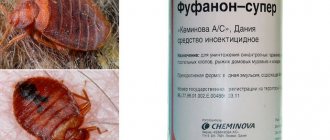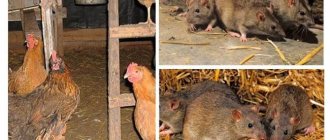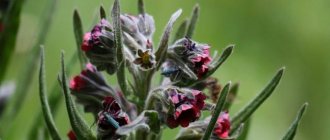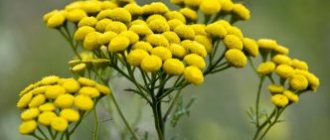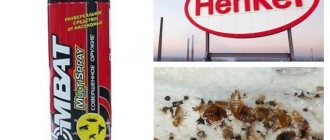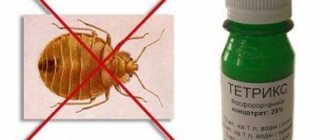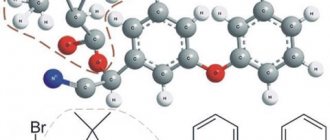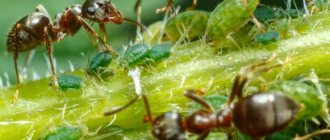General information about fertilizer
The formula of the substance is (NH2)2CO, the chemical name is carbonic acid diamide. It is obtained from ammonia and carbon dioxide. Urea has a crystalline structure and is usually granulated during production. Granules are 2-3 mm in diameter, colorless or white, no odor. They are slightly hygroscopic, but highly soluble in water and can be transported without problems. They should be stored in plastic bags; granulated urea does not stick together and almost does not cake. The fertilizer belongs to the 3rd class of substance hazard (moderately hazardous), you can work with it without protective equipment.
Urea contains 46% nitrogen, more than any other nitrogen or mixed fertilizer. The element is in the amide form; it has been established that in this form plants absorb it poorly. The rate of transformation of nitrogen into mineral form is affected by temperature and soil reaction: in warm and neutral soil the process proceeds fastest, in cold, acidic or alkaline soil it slows down.
Granulated urea contains biuret; this substance, if it is more than 3%, can inhibit and poison plants, especially sprouts. It should not be more than 1% in urea; however, this figure is usually not exceeded in commercially produced fertilizers.
Treating roses with urea in the fall. Properties of urea
Experienced gardeners know that in order to get a high harvest in the new season, they need to provide proper garden care in the fall, in advance of winter. This care includes:
- pruning old branches;
- whitewashing of trunks.
However, it is not recommended to limit yourself to such actions only. It is very important to properly treat the garden with urea against pests and diseases in the fall.
Any plants need nitrogen fertilizers to ensure good growth, ovary formation and fruit ripening. And with the onset of autumn, fruit bushes and trees need nitrogen-containing spraying. Such preventive spraying is carried out using urea.
Novice gardeners, who are poorly versed in a wide variety of fertilizers, often confuse urea with another nitrogen-containing fertilizer - nitrate.
Urea is familiar to many under another name - urea, which is a highly concentrated nitrogen fertilizer. Urea is produced in the form of granules:
- yellow or white shades;
- without smell;
- highly soluble in water (urea dissolves especially quickly if the water is preheated to 80 degrees).
Gardeners actively welcome nitrogen irrigation of trees and shrubs with urea, since it is very quickly absorbed by plants. As a result of exposure to urea, harmful insects and fungal spores die.
Nitrogen irrigation of fruit crops in the fall is important because during the summer season they lose a lot of energy, directing them to the formation, growth and ripening of fruits.
Trees and shrubs need to receive a sufficient amount of nutrients that will ensure a comfortable transition into a state of suspended animation.
By the way, urea is an excellent assistant for gardeners in other matters. In particular, urea helps gardeners to clear the garden of old stumps. After watering such stumps with a urea solution, the process of their decomposition and rotting accelerates, and soon they can be easily removed from the ground, freeing up space for planting new seedlings.
Advantages and disadvantages of using urea
Fertilizing with urea is as effective as using saltpeter and other fertilizers containing nitrogen. It can be used for all vegetable and garden crops, for soil preparation and for seasonal applications.
Due to the high nitrogen content of urea, you will need 3 times less than nitrate, so purchasing it is economically profitable. Plants that cannot tolerate chlorine will not suffer from the use of urea; it does not contain this element. It lingers in the ground for a long time, so it is recommended to use it on sand and sandy loam, from which other mixtures are quickly washed out.
The disadvantages of urea as a fertilizer are that when applied to the soil it does not act immediately, therefore it is not suitable for emergency fertilizing, it acidifies the soil, and if the concentration in the soil is too high, it inhibits seed germination.
Urea as a fertilizer for the garden
As a rule, experienced gardeners use urea solution both as a fertilizer and for the prevention of diseases and pests. It is important to choose the right time for spraying:
- the air temperature should be above +5 degrees;
- ants (predecessors of aphids and other insect pests) crawl around the trunks of fruit trees;
- the garden is cleaned, damaged shoots are pruned, the soil is dug up;
- The day is sunny and windless.
If all conditions are met, you can begin preparing the solution. It is necessary to work with organic matter in a protective suit, mask, goggles and gloves. To spray old trees, it is recommended to use a special sprayer with a long rod nozzle. A stable stepladder will also help the gardener.
There are some tips for beginner gardeners:
- If the task is to both fertilize the soil and kill insects, then it is better to mix urea with copper sulfate: 700 grams of granules + 50 grams of copper sulfate + 10 liters of water.
- There is no need to spare the solution - urea is not capable of harming fruit plants.
- The first spraying should be carried out before the buds open, the second treatment should coincide with the flowering of fruit trees, and the third time the garden should be sprayed immediately after the ovaries appear.
- If it rains within 24 hours after spraying, the treatment of the plants will have to be repeated.
- Additionally, you can carry out root treatment of fruit trees with urea. To do this, pour granules under the tree and water the plant generously. Calculation of the amount of fertilizer depends on the type of plant and its age (usually apple trees need about 230 grams of granules, and cherries and plums - no more than 150 grams for each tree).
- If, in addition to urea, some organic fertilizers were used, its dose should be reduced by a third, or even half (depending on the quantity and quality of the organic matter).
Important! Not only fruit trees are sprayed with urea solution. Nitrogen fertilizer is effective for both fruit and ornamental shrubs.
How to know that plants need urea: signs of nitrogen deficiency
A deficiency of the substance can be noticed by the appearance of the crop. Plants stop growing, the leaves become smaller, lose their normal green color and shine, the lower ones turn yellow, curl and fall off. Flowering occurs ahead of schedule, but the yield drops as few fruits are set.
An excess of nitrogen is also harmful to plants. This can be noticed by the increased growth of green parts and the dark green color of the foliage. In an overfed crop, the lower leaves curl and the fruits do not ripen well.
Urea as a fertilizer (appearance, characteristics and properties)
People cannot be healthy without vitamins, micro- and macroelements. Vegetables, berries, flowers, just like people, get sick due to a lack of nutrients. Nitrogen, phosphorus and potassium are important macroelements in the plant life cycle:
- nitrogen accelerates the regrowth of shoots and leaves;
- thanks to phosphorus, fruits and berries ripen faster and buds form;
- potassium stimulates root growth.
Solving the problem of the lack of a macronutrient responsible for the growth and development of green mass of plantings on a summer cottage is a feasible task for nitrogen fertilizer.
Urea (this is urea in colloquial speech) is a mineral fertilizer with a nitrogen content of 46.2%. Outwardly it looks like small pearls, round granules of a white, milky or grayish hue, 2-3 mm in diameter, no smell. Main properties of urea:
- high concentration of nitrogen - 100 kg will replace 300 kg of sodium nitrate;
- effortlessly completely dissolves in water and other liquids;
- nitrogen in a form that is more easily absorbed by agricultural crops;
- decomposes gradually in the soil;
- slightly acidifies the soil;
- helps increase yield;
- When spraying the garden it does not damage the foliage.
Instructions for use of urea
According to the instructions for use, urea fertilizer can be used in solutions or by distributing granules over the soil for further dissolution. It is also suitable for foliar spraying, does not cause burns, penetrates perfectly into leaf tissue, the effect is noticeable within 2 days. The substance may react with inorganic compounds and organic matter. It is convenient to use: you do not need to dilute urea for irrigation in hot water or mix it with other components to achieve the desired effect.
Urea granules for irrigation should be diluted in a proportion of no more than 50 g per 10 liters, when applied to the soil per 10 square meters. m use no more than 100 g of fertilizer. The granules must be embedded in the top layer of soil.
How to properly fertilize the soil with urea
Different crops require different amounts of the drug. Let's look at how to properly fertilize with urea in the spring and during the growing season of various vegetables, shrubs and trees. For convenience when preparing solutions, you need to remember that there is approximately 10 g of substance in a matchbox, 15 grams in a tablespoon.
Potato
You need to apply urea under it when preparing the soil, in the spring, along with potash fertilizers. For potatoes you need no more than 25 g per 1 square meter. m.
Grape
Adult bushes, from the 2nd year of life, are fertilized 3 times a season: in the spring, before and after flowering, when the ovary begins to grow. For grapes, take 30-50 g of the substance per 1 bucket.
We recommend reading
Use of Bordeaux mixture in horticulture and gardening
How to use chicken manure in the garden, preparing fertilizers
How to prepare a solution from powder and paste of the biological product Fitosporin-M
Instructions for use of the drug Epin extra
Tomatoes
Urea is applied to tomatoes once during planting. Urea consumption for seedlings is 20-25 g per 1 sq. m. A urea solution for irrigation is prepared from 20-30 g per bucket, for foliar feeding of tomatoes - 40 g per 10 l (used when ovaries appear).
cucumbers
You can water and spray them with solutions of this fertilizer. An irrigation solution is prepared from 15 g of the drug per 10 liters; foliar application for cucumbers is carried out with a liquid consisting of 10 g of urea and 20 g of potassium chloride.
Eggplant
They are fed only 2 times - during sowing of seeds and when the fruits begin to ripen. Consumption – 10 g per 1 bucket.
Cabbage
If there was no pre-planting application, then fertilizing with urea is carried out 15 days after the seedlings are planted. The norm is 30 g of the drug per 10 liters.
Garlic and onion
For onions and garlic, urea must be applied at the beginning of their growth. Prepare a solution by dissolving 10 g of the substance and calcium chloride in 10 liters.
Strawberries and wild strawberries
The first use of urea in the garden for strawberries occurs at the time of planting. It is applied directly into the planting holes, 5 g at a time. Then the strawberries are fertilized with urea during budding and ovary formation - they are sprayed with liquid (10 g per 2 l) on the leaf. In the fall, before covering the bushes for the winter, you need to feed the strawberries with a solution of 30 g of urea per 10 liters.
Processing and feeding currants with urea
Urea is applied to berry bushes in undissolved form - in granules, embedding them in a 10 cm layer of soil. This is done when leaves appear (20 g per plant), buds open and berries begin to fill (60-70 g). The fertilizer is effective against pests; for this purpose, in spring and autumn, during preparation for winter, berry plants are treated with urea. Concentrated solution - 50-70 g per 10 liters of water.
Application of urea for garden flowers
Annuals are fed 2 times during the summer: 1.5-2 weeks after they are planted and during the formation of buds. Perennial flowers are also fertilized after they bloom, so that they have time to recover before they go to winter. The application rate is only 5-10 g per 1 square meter. m. For a lawn, the dosage is different - 15-20 g per 1 sq. m. m. You can spray the flowers monthly; foliar fertilizing with urea will enhance their flowering.
Fertilizing indoor plants and flowers with urea
Usually complex fertilizers such as Agricola are used for them, in which all the elements are taken in the ratio and dose required for indoor flowers. But during a period of rapid growth, you can fertilize indoor plants with urea, but take it in very small doses - 5 g per 10 liters.
Treatment of fruit trees with urea
It will come in handy not only in the garden, but also in the garden. Trees are fertilized in the spring by adding 15-20 g of granules to the tree trunk circles. The garden is treated with urea, spraying the trees leaf by leaf with the solution. To dilute urea for spraying trees, you need to take 20-30 g per 10 liters of water.
Urea as protection against pests
Spraying with urea is used as an insecticide against insects that harm fruit trees. It is carried out in early spring, before the buds open, and in the fall, after leaf fall. Spraying with urea will protect against weevils, aphids, scab, and anthracnose. The solution is prepared from 0.3-0.5 kg of fertilizer per 10 liters.
Pros and cons of urea
Like any substance, urea used to treat fruit trees has not only positive qualities, but also disadvantages. Noting the advantages, it is worth noting:
- instant action that lasts for a long time;
- versatility, it is used both in greenhouses and in open rows, the type of soil also does not matter;
- safety, even if the solution is prepared with a deviation in proportion, the plants will not get burned;
- easy digestibility by fruit crops;
- high efficiency;
- delaying the growing season of shrubs and trees sprayed with urea, which will protect the ovary from death in the event of sudden frosts;
- increasing productivity by treating the garden with fertilizer during the period when buds are forming;
- protective properties that affect pests and diseases.
Disadvantages include:
- Exceeding the norm for applying fertilizer to the soil is a common cause of decreased seed germination;
- special storage requirements;
- To prepare a mixture of urea and phosphate fertilizers, only dry mass is used, which affects the acidity of the soil;
- urea cannot be mixed with other nitrogen fertilizers, also with chalk and lime;
- the need for regular and high-quality watering.
Preparing the garden for treatment with urea
During the spring flowering of apple, plum and pear trees, it is recommended to treat the plants with urea. Such an event is very effective in preventing damage to garden plantings by caterpillars of the leaf roller, aphids, copperhead and apple flower beetle. Before treatment, plants should be properly prepared.
Immediately before processing, it is necessary to carry out sanitary pruning and remove all diseased or affected areas of the bark, cleaning them with a spatula or a metal brush. Such preliminary preparation can ensure direct contact of the solution with the affected area or cluster of pests during the spraying process.
For the most effective destruction of plant parasites and diseases, it is necessary to use a concentrated solution. To prepare the working solution, dilute 0.5−0.7 kg of urea in 10 liters of water. Experienced gardeners recommend carrying out spring spraying in the first ten days of March, and in the last days of the month. It is important to remember that the second treatment is carried out with a less concentrated solution, which will protect the foliage from burns.

